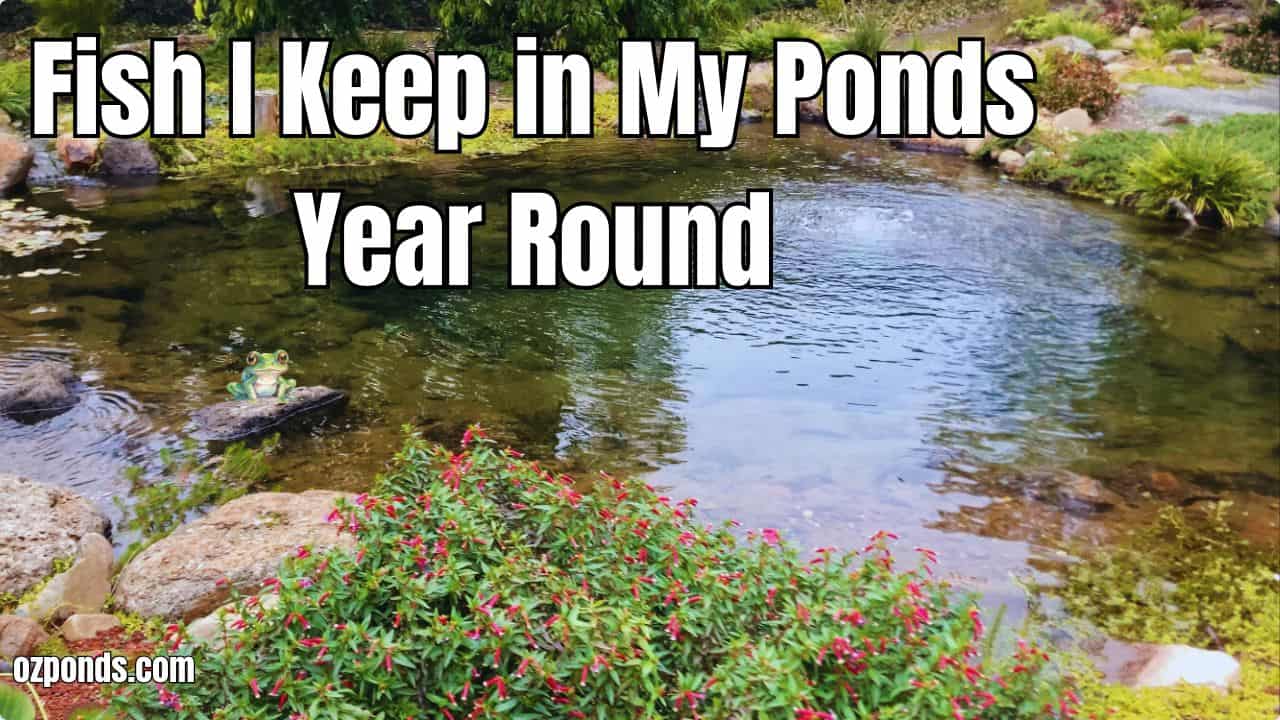Ponds bring life and beauty to any backyard, and I’ve been fortunate to keep a variety of ponds with different shapes, sizes, and ecosystems.
Over time, I’ve discovered a few fish and animals that stand out as my favourites, not only for their hardiness but also for their beginner-friendly nature and ability to tolerate a range of temperatures—from chilly winters to tropical warmth.
Overlooked Pond Helpers
1. Shrimp
Shrimp are an incredible addition to any pond. I keep two varieties year-round:
- Native Shrimp: Sourced from local waterways, these shrimp thrive in colder Australian winters and have formed a self-sustaining population in my ponds.
- Cherry Shrimp: Available in vibrant colors like red, blue, and yellow, these shrimp can handle temperatures as low as 5°C. They’re visible, active, and a delight to watch.
Both types are excellent algae-eaters, help clean up uneaten food and organic waste, and even serve as a natural food source for fish.
2. Snails
While often considered pests, snails play an essential role in a pond’s ecosystem. They eat algae, break down organic matter, and even feed on surface protein films. Though I’ve never intentionally added snails to my ponds, they’ve proven to be an invaluable part of the habitat.
3. Tadpoles
Tadpoles are a joy to watch as they grow and transform. Not only do they graze on algae, but they also provide a net positive by consuming nutrients and eventually leaving the pond once they mature into frogs. This natural nutrient recycling is a significant benefit for pond health.
My Favourite Fish
Australian Natives
- Pacific Blue-Eyes
These small, active fish feature a shimmering blue sheen around their eyes. Perfect for mosquito control, they thrive in outdoor ponds and smaller tubs. Hardy and vibrant, they coexist well with tadpoles and plants. - Honey Blue-Eyes
A stunning nano fish with a golden hue, honey blue-eyes are native to northern Australia. They are active and peaceful, making them great for small ponds or aquariums. Though from warmer regions, they can adapt to cooler climates. - Murray River Rainbow Fish
Known for their dazzling iridescent colors, these fish are endemic to the Murray-Darling Basin. They are hardy, tolerate cold, and are excellent for larger ponds with plenty of vegetation. - Southern Pygmy Perch
Small and colorful, these fish prefer densely planted ponds or aquariums. They are excellent for mosquito control and are an essential addition to native aquatic habitats. - Silver Perch
A robust species, silver perch are excellent for larger ponds or aquaponic systems. They grow quickly, are easy to care for, and contribute to ecological balance. - Firetail Gudgeon
With striking red and black markings, firetail gudgeons are active and hardy. They are well-suited for smaller ponds and aquariums, thriving in cooler water and eating small invertebrates. - Southern Purple-Spotted Gudgeon
This rare and endangered species features vibrant purple spots. Preferring quiet, well-vegetated waters, they are excellent for conservation-focused pond setups. - Dwarf Galaxias
A tiny and delicate native fish, dwarf galaxias are ideal for small ponds or aquariums. They thrive in cooler waters and contribute to controlling mosquito populations.
If you are looking to purchase pond fish click here.
Non-Natives
- Goldfish (Comets and Shubunkins)
Goldfish are colorful and active pond fish that add a vibrant touch to any water feature. Hardy and adaptable, they eat algae and mosquito larvae but are prone to predation in open ponds. - Japanese Rice Fish
Small and colorful, rice fish are excellent for mosquito control and breed prolifically in ponds. Their visible egg clutches make them unique and fascinating to observe. - White Cloud Mountain Minnows
A hardy, active species, these fish are perfect for smaller ponds and aquariums. They breed easily, control mosquitoes, and are tolerant of cooler temperatures, making them a great beginner-friendly option.
The Circle of Life in Ponds
Keeping a naturalistic pond means embracing the cycle of life. Birds and other predators may occasionally claim some of your fish, but with a self-sustaining population, there’s balance in the ecosystem.
I’ve learned to appreciate this harmony—it’s part of what makes pond-keeping so rewarding.

Blueprint I use to build my ponds
- All the numbers I use to design my ponds, delivered straight to your inbox
- These formulas have helped people all over the world build beautiful, low maintenance ponds, without spending a fortune.
- Access to a private community of like minded people and a chat bot that loves answering pond related questions.
Conclusion
Whether you’re a beginner or an experienced pond enthusiast, the fish and animals mentioned here are excellent choices for creating a thriving, natural pond ecosystem. They’re hardy, low-maintenance, and bring endless enjoyment to your backyard.
Thanks for reading, and happy pond-keeping!

